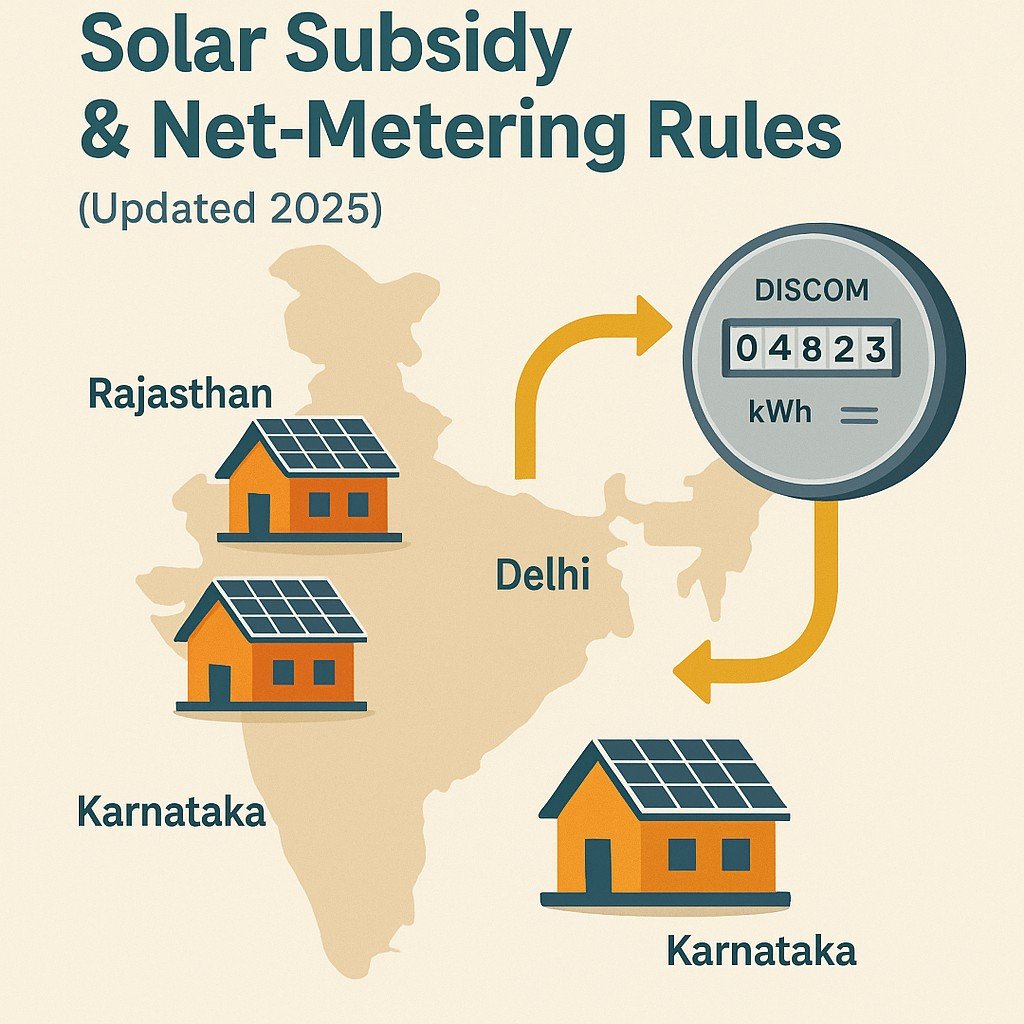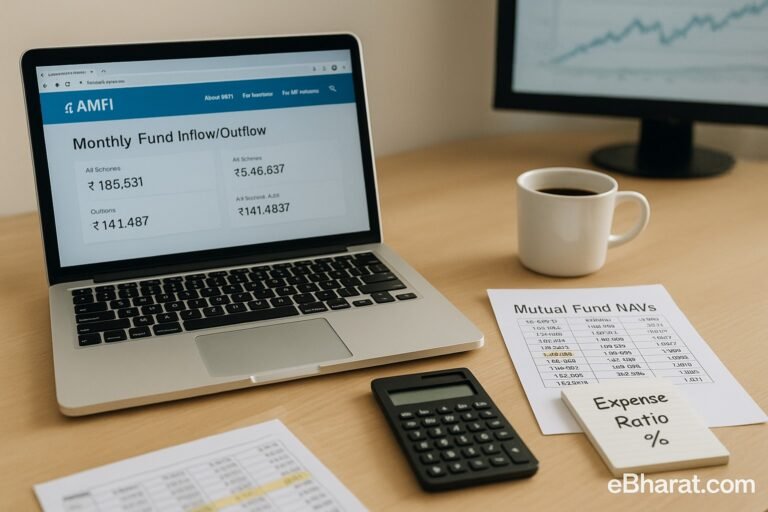
India’s solar push is backed strongly by the government through state-level subsidies and net-metering policies. While the central scheme under the PM Surya Ghar Muft Bijli Yojana offers uniform subsidy, the actual rules differ by state — from how much subsidy is added on top, to how excess power is credited. If you’re planning a rooftop solar installation in 2025, knowing your state’s policy can help you save lakhs.
Why State Policies Matter
- Subsidy Variations: Some states (like Gujarat and Rajasthan) provide extra subsidy over the central amount.
- Net-Metering Rules: Rules differ — some allow credits for up to 500 units, others restrict it to sanctioned load.
- Application Ease: State DISCOMs often have different approval timelines and documentation.
Central Subsidy (Baseline) 2025
Before we dive state-wise, here’s the central subsidy applicable across India:
- ₹18,000/kW up to 3 kW (max ₹54,000).
- ₹9,000/kW for 3–10 kW range.
- Above 10 kW → no extra subsidy.
State-Wise Snapshot (2025)
| State | Extra Subsidy | Net-Metering Policy |
|---|---|---|
| Gujarat | ₹10,000/kW extra (up to 2 kW) | Full net-metering, credits up to 500 units/month |
| Rajasthan | 5% top-up subsidy by state DISCOMs | Excess units adjusted against monthly bill |
| Delhi | No extra subsidy | Net-metering up to sanctioned load, rollover allowed |
| Maharashtra | No extra subsidy | Net-metering allowed only up to 10 kW homes |
| Tamil Nadu | No extra subsidy | Gross-metering for >10 kW, small homes can net-meter |
| Karnataka | ₹5,000/kW extra (urban only) | Net-metering allowed, settlement annually |
(Note: Policies updated as per 2025 notifications, check with local DISCOM for final approval.)
Why It Matters for Homeowners
- Maximize Savings: A 3 kW setup in Gujarat can save an extra ₹20,000 in subsidy vs Delhi.
- Plan Backup Wisely: In states with restrictive net-metering, adding batteries makes sense.
- Faster ROI: Combining central + state subsidy can cut payback to just 3–4 years.
Solar is no longer just a green choice — it’s a financial upgrade for Indian families. With the 2025 state-level subsidies and net-metering rules, now is the perfect time to install solar and slash your electricity bill.
🔆 Want to Apply for Solar Subsidy?
Check the official PM Surya Ghar: Muft Bijli Yojana National Portal for state-wise updates and use eBharat Tools to calculate ROI, subsidy savings, and solar sizing for your home.












